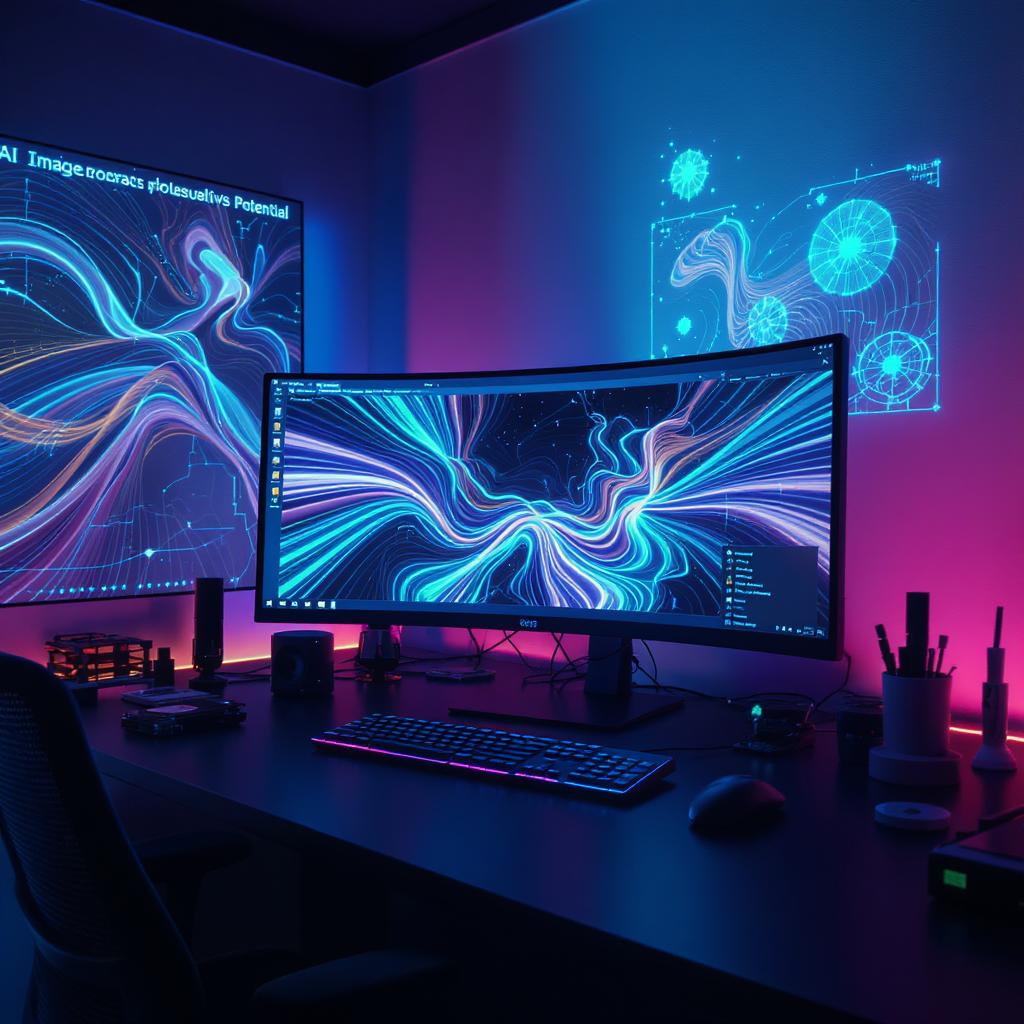
-
21/7/2025
AI-powered image generation represents a groundbreaking collaboration between creativity and technology, revolutionizing how visual content is made and perceived. By marrying data with algorithms, machines are now capable of creating visuals previously limited to human creativity.
Central to this innovation are algorithms like Generative Adversarial Networks (GANs), which ingeniously pit a generator against a discriminator in a competitive neural network duo. The generator strives to craft realistic images from noise, whereas the discriminator works to differentiate between genuine and generated visuals. This concurrency yields increasingly credible images, fueling limitless creativity and innovation.
Models like OpenAI's DALL·E illustrate these advancements vividly. They leverage text input to produce coherent visuals, pushing the boundaries of traditional image creation. Picture envisioning a peculiar scenario—such as an elephant in space—and watching AI vividly manifest this concept.
Such developments influence more than just novelty; they impact various industries significantly. These AI advances enable artists and businesses alike to visualize creative ideas previously hindered by skill or resource constraints, ushering a new era of accessible creativity.
Beyond creation, AI in image generation transforms education and therapy. Personalized illustrations cater to individualized learning experiences, and visual outlets offer therapeutic benefits in mental health fields. This evolving narrative invites us to imagine a realm where our creative potential is confined only by our imagination.
- Why is it important? Artists and designers find new methods through AI, enhancing their craft by integrating this technology as a collaborative force, not just a tool.
AI reshapes artistic processes, from preliminary sketches to reimagining color and composition, blending human creativity with machine intelligence, exploring untapped artistic potential.
- How do you do it? AI-generated pieces are gaining prominence globally, featured in world-renowned exhibitions like at Christie's auction house and on digital spaces such as DeviantArt and the Art AI Gallery. These platforms emphasize AI's role in transforming imaginative concepts into reality.
- What if you don't (or want to go further)? By avoiding AI integration, creatives might miss the collaboration opportunities that defy conventional artistic boundaries, limiting the exploration of innovative art forms.
Brands exploit AI in marketing strategies, transforming traditional methods with dynamic content that appeals to specific audiences deeply.
- Why is it important? AI enables brands, like Coca-Cola and Nike, to personalize content according to local tastes and preferences, enhancing brand communication and consumer connections significantly.
- How do you do it? AI enhances the cost-effectiveness and efficiency of content output, speeding up creation time and reducing production costs, allowing marketing teams to adapt swiftly to trends.
- What if you don't (or want to go further)? Neglecting AI's potential in marketing might result in lagging behind innovative competitors who engage consumers with interactive, AI-enhanced content.
The gaming industry exemplifies AI's transformative potential, creating incredibly realistic and immersive player experiences.
- Why is it important? AI-generated settings and characters revolutionize gaming by providing dynamic environments responsive to player actions, enhancing narrative and interactive experiences.
- How do you do it? Companies like Ubisoft use AI to develop complex NPCs, enhancing game depth and realism, while Epic Games employs AI to render vast, intricate landscapes.
- What if you don't (or want to go further)? Not embracing AI in gaming may lead to oversight of evolving interactivity and narrative possibilities, pivotal as AI continuously beautifies gameplay and storytelling dynamics.
Ethics and ownership issues accompany these AI strides, questioning the attribution of AI-generated content and the threat of misuse such as deepfakes.
- Why is it important? Questions of ownership arise: Is ownership with the coder, the input provider, or the AI itself? Addressing this and deepfake misuse worries are essential to maintain information integrity.
- How do you do it? The tech community addresses these challenges with ethical boards and collaborative policy-making, aiming to establish guidelines for responsible AI deployment.
- What if you don't (or want to go further)? Neglecting these problems might lead to unchecked risks that harm trust in AI developments but fostering transparency can guide AI innovation ethically.
Looking toward the future, AI's image generation capabilities enthrall with potential, promising to reshape our visual interactivity through adaptive visual systems integrated into augmented reality platforms.
- Why is it important? AI democratizes access to high-quality visual content creation, leveling the playing field and opening new marketing and creative opportunities for individuals and small businesses.
- How do you do it? Engage with AI for leveraging sophisticated image creation, whether designing marketing visuals or exploring fresh artistic areas, and stay well-informed for ethical tool usage.
- What if you don't (or want to go further)? Avoiding AI's potential might hinder access to transformative creative processes, missing out on the enhanced quality and interactive innovation it brings.
AI unfolds as a compelling partner in defining creativity, prompting users to contribute to a vibrant creative landscape through informed participation in its ongoing technological journey.
